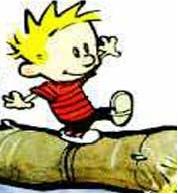Aparajito (The Unvanquished)
After the success of Pather Panchali Ray knew that cinema was his real calling and hence quit his job in the British advertising agency to pursue film-making. After racking his brains for a while to find a suitable subject for his next movie with no results, Ray re-read the twin novels by Bibhutibhushan and contemplated the idea of a sequel to Pather Panchali. Apu’s onward life in Benaras seemed quite interesting as well as full of cinematographic opportunities. He finally decided to make “Aparajito”.
The story is quite interesting and eventful, but the movie isn’t as emotionally intense and moving as Pather Panchali. Though it sure is cinematographically brighter than the last one. Picturesque ghats of Benaras, chaos of Kolkata and moving train shots add to the dynamicity of the movie. Ray has used several integrating themes to connect to the last movie and to make the story seem smooth and the transition natural. The “train” and its sound, two deaths and open location shooting make the film appear strongly connected to the Pather Panchali. The presence of same characters (Harihar and Sarbajaya) makes the transition even smoother. The train is a symbol of mobility, change and a carrier of modernity. Deaths in the Apu’s family correspond to major overhauls in his life and its course.
After a year or so of peaceful life in Benaras, Harihar dies and Sarbajaya moves as a servant (cook) to a Zamindar Bengali family to Burdwan in Bengal. But when she gets invitation from his uncle living in a village she can’t resist the idea of going with him, the reason being that she cannot see his son working as a servant for the Zamindars with indifference towards them. They move to the maternal uncle’s village where Apu learns priest work and starts to earn for the family. But the curiosity of Apu to go to school doesn’t allow things to be as Sarbajaya wants. He has the curiosity to go after the unknown and know the outside modern world. He studies and gets scholarship to study in Kolkata. Sarbajaya relents unwillingly to his son’s will and he moves to Kolkata leaving Sarbajaya alone in the village. His fascination with modernity leads to his ignorance for the village and Sarbajaya. He rarely visits her and overlooks her deteriorating health. She finally succumbs to death waiting for his son on a dreary night full of fireflies. Apu returns to find the home empty and after a little morning he discovers a strange transformation in himself and returns to Kolkata with a strange relief of being set free to continue his pursuit for modernity.
The most influencing character in the movie is Sarbajaya and her immense strength as a mother. She has this strong feeling of pride and is willing to sacrifice everything for his son. Initially the mother-son relationship is intense but as Apu grows apart from her mother and matures (in a very different sense being hostile to nativity and simplicity) the relationship becomes more complicated and we feel sympathy for Sarbajaya.
Ray has employed several cinematographic feats to add to the story’s impact like flocks of pigeons taking off as soon as Harihar dies implying sudden grief. Death of Sarbajaya is equally moving with impact of the dancing fireflies sequence. The monkey sequence in Benaras temple was also well shot. Under lit streets of Benaras give a shady feeling to the life there in contrast to the well lit ghats. Ray has wriiten in “My days with Apu” that his setmaker was the first person to use cloth reflected light to make Harihar’s home inside set giving it a filtered light feeling as is the case with the Benaras homes in congested streets. This imparts natural look to the shots in spite of the low light inside a home lit only by filtered sunlight coming from center yard. The soundtrack in this movie is also by Ravi Shankar and is equally delightful as in Pather Panchali.



No comments:
Post a Comment